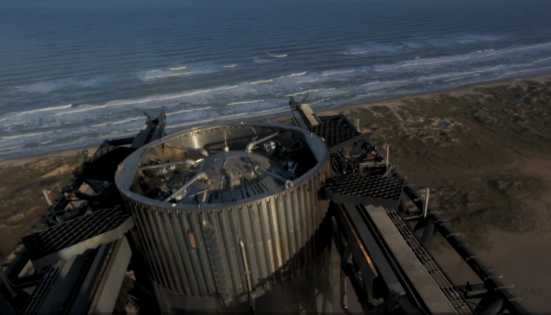SpaceX successfully executed its second-ever “chopsticks” catch of a Super Heavy booster (or Booster 14) using the “Mechazilla” launch tower on Thursday(Jan. 16), during the seventh uncrewed test flight of the company's 123-meter Starship rocket. However, the megarocket's upper stage(or Ship 33) was lost approximately 8.5 minutes into the flight in a “rapid unscheduled disassembly(RUD)” or explosion.
The reusable Ship and Booster combo lifted off at 2237 UTC, from SpaceX Starbase site in South Texas. The RUD occurred while the Ship was ascending and had already reached an altitude of 145 kilometers(km) and a speed of 21,243 km per hour.
All six of Ship's Raptor engines fired up during ascent burn, "but as we were getting to the end of that ascent burn, we saw engines dropping out on telemetry, and we have since lost contact with the Ship,” Dan Huot, of SpaceX's communications team, said during the company's launch webcast.
Huot and fellow webcast host Kate Tice later confirmed that Ship had been lost. The reasons were not immediately clear, the duo said.
Ship was supposed to fly much of the way around the world, then splash down softly in the Indian Ocean off the west coast of Australia about 66 minutes after liftoff, as it did on the three previous Starship launches.
Debris from the spacecraft was reportedly spotted falling over the Caribbean, causing flights in the area to be delayed or diverted as a precautionary measure. Videos circulating online show the debris over Turks and Caicos.
SpaceX has stated that it will review the data from the flight to determine the root cause of the anomaly and improve the reliability of the Starship spacecraft.
In a statement on its website, the company writes,
"Following stage separation, the Starship upper stage successfully lit all six Raptor engines and performed its ascent burn to space. Prior to the burn’s completion, telemetry was lost with the vehicle after approximately eight and a half minutes of flight. Initial data indicates a fire developed in the aft section of the ship, leading to a rapid unscheduled disassembly.
"Starship flew within its designated launch corridor – as all U.S. launches do to safeguard the public both on the ground, on water and in the air. Any surviving pieces of debris would have fallen into the designated hazard area. If you believe you have identified a piece of debris, please do not attempt to handle or retrieve the debris directly. Instead, please contact your local authorities or the SpaceX Debris Hotline at 1-866-623-0234 or at [email protected].
"As always, success comes from what we learn, and this flight test will help us improve Starship’s reliability as SpaceX seeks to make life multiplanetary. Data review is already underway as we seek out root cause. We will conduct a thorough investigation, in coordination with the FAA, and implement corrective actions to make improvements on future Starship flight tests.
"The ship and booster for Starship’s eighth flight test are built and going through prelaunch testing and preparing to fly as we continue a rapid iterative development process to build a fully and rapidly reusable space transportation system."















